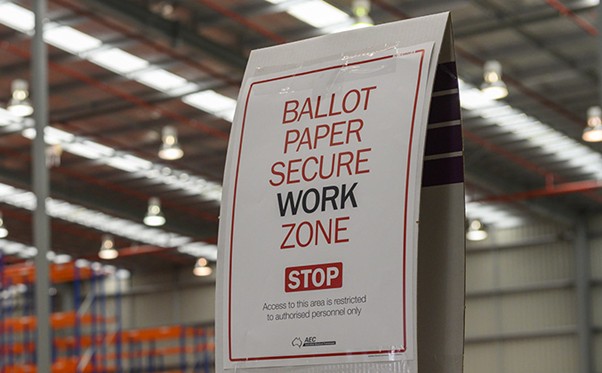The critical three-candidate-preferred (3CP) count is over half way through, as we edge closer to determining who will represent the electorate of Flinders in the next term of government.
Over 110,000 votes were counted in the electorate of Flinders first preference vote count. The Australian Electoral Commission’s traditional two-candidate-preferred (2CP) count had to be abandoned in favour of a 3CP count due to the close proximity between Labor’s Sarah Race and independent Ben Smith. While Liberal Zoe McKenzie polled the highest, essentially there wasn’t a clear second ranking candidate resulting in AEC adopting a “complex count scenario” 3CP count.
As of Friday night the results in the 3CP count are:
Total counted: 56,108 (of the 106,800 formal votes)
Zoe McKenzie (Liberal): 27,087 votes (48.28% of 3CP)
Sarah Race (Labor): 14,966 (26.67% of 3CP)
Ben Smith (Independent): 14,055 votes (25.05% of 3CP)
The latest results see Race stretch her lead over Smith to 911 votes. McKenzie’s vote has dropped under 50%, after being above 50% on Wednesday.
Once the second candidate in the 2CP contest is determined, the votes from the eliminated candidate will be reallocated according to preferences. If the percentages stay the same, once the third candidate is eliminated, McKenzie would need to attract just a small portion of the eliminated candidate’s preferences to push her above the 50% required to clinch.
Usually elections are fairly straight forward. To streamline the process (mostly for the satisfaction of the television viewer at home) the AEC pre-determines who they believe will be the two highest polling candidates. They then provide data of the indicative 2CP results to keep people well informed of the likely outcome as quickly as possible.
In Flinders, there was a problem. McKenzie and Race were selected by the AEC as the 2CP candidates, but during the night a third candidate, Smith, was polling higher than Race. This caused the AEC to abandon its 2CP reporting for McKenzie and Race.
Now there was a strong polling first candidate in McKenzie, and a neck-and-neck scenario for second between Smith and Race.
The solution, although time consuming, is instead of running the planned 2CP contest, the AEC runs a 3CP contest. And that is what is being undertaken in the electorate of Flinders.
The process involves sorting votes into piles for three candidates instead of two.
Like the 2CP count, ballot papers go into the pile based on who received the highest preference. In practice, this means we set aside ballot papers with first preferences for the three leading candidates, then the AEC takes the ballot papers with first preferences for the remaining candidates and allocate each ballot paper to one of the three leading candidates based on the second preference on that ballot paper (or the next preference available for one of the three candidates). Then they tally up how many votes each of the three candidates have to understand who the likely winner will be, and who the top two candidates will be.
Once the two leading candidates are determined the legislated 2CP count will be conducted, which as always is followed by the full distribution of preferences.
In the 2025 election, the 3CP process is currently being undertaken for ten seats.




